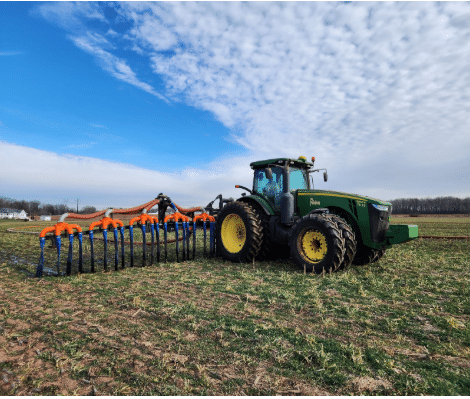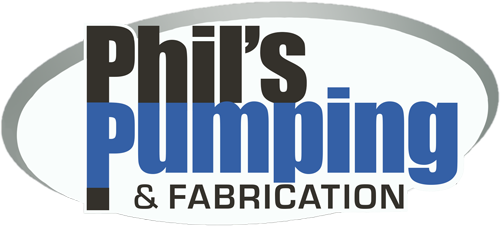Comprehensive Guide to Dragline Manure Equipment for Sale: What to Look For

Durable hose reels ready for field use—built for efficient manure pumping and long-distance dragline systems.
Best Equipment for Sale
Modern dragline manure systems turn manure management from a logistical challenge into a precision nutrient-delivery operation. By pumping liquid manure directly from storage to the field through a network of lay-flat supply and drag hoses, farms can eliminate endless tanker trips, reduce soil compaction, and save thousands in fuel and labor. If you’re evaluating Dragline Manure Equipment for Sale, it’s worth understanding each component of the system and how to identify one that will serve you reliably for years.
Understand the Essential Components
A dragline system isn’t a single machine — it’s an integrated setup of pump, hose, reel, toolbar, and control technology working together. Each piece must perform under high flow, high pressure, and abrasive conditions.
1. The Pumping Unit
The pump is the heart of every dragline system.
Look for a high-volume, high-pressure centrifugal manure pump capable of maintaining steady flow through long runs and elevation changes.
- Inspect impeller wear, seal condition, and bearing play — these are common wear points.
- Ask about service history: when were seals, bearings, and mechanical components last replaced?
- Ensure the engine (diesel or PTO-driven) delivers enough horsepower for the desired GPM and head pressure.
If you plan to pump long distances or over hills, consider a booster pump to maintain line pressure and prevent flow drop-off.
2. Mainline Hose and Couplings
The mainline (supply) hose transfers manure from the lagoon pump to the edge of the field.
Quality and integrity here are non-negotiable — a mainline rupture can halt operations and cause major cleanup.
- Choose TPU lay-flat hose such as Mandals Superman HVT, XP HVT, or Flexitex Extra, engineered for high working pressures.
- Inspect for cuts, abrasions, or dry rot, especially near couplings.
- Check cam-lock or Bauer-style fittings for corrosion, pitting, or leaks under pressure.
- Make sure hose diameters and coupler types match throughout your system for leak-free flow.
3. Drag Hose and Hose Reels
The drag hose connects the mainline to the applicator toolbar and is pulled across the field during application.
This hose endures the most abuse — dragged over soil, rocks, and crop residue daily — so durability and flexibility are critical.
- Opt for TPU-reinforced drag hose like the Mandals Dragman, built for abrasion resistance and flexibility.
- Inspect the outer jacket for wear, delamination, or thin spots.
- Check the hose reel (often hydraulic-driven) for frame integrity, bearing smoothness, and chain or hydraulic drive performance.
- Ensure reels can handle the full hose length without crimping or uneven winding.

Dragline injector toolbar ensures even manure placement and efficient nutrient delivery in every pass.
4. Applicator Toolbar
The toolbar (also called the applicator or injector) determines how manure reaches the soil.
- Surface toolbars use dribble bars or splash plates for quick coverage.
- Injection toolbars place manure beneath the surface using coulters, sweeps, or discs — ideal for nutrient retention and odor control.
Inspect wear points carefully:
- Check knives and coulters for sharpness and bending.
- Look for cracks or weld fatigue in the frame or manifolds.
- Verify that flow dividers and manifolds distribute manure evenly across outlets.
Evaluate Precision and Performance
Modern dragline systems increasingly feature precision technology that improves accuracy and compliance.
- Flow meters measure gallons per minute and total volume applied — critical for meeting nutrient management plans. Ensure calibration records are current.
- GPS control systems integrate with field mapping to maintain consistent coverage and avoid overlaps or missed passes.
- Remote pump control or wireless pressure monitoring allows the operator to adjust flow rates or pressure without leaving the tractor cab.
When buying used, confirm that all sensors, wiring, and controllers are functional and compatible with your existing equipment.
Maintenance and Durability Considerations
Dragline systems work in harsh, corrosive environments, so build quality matters.
- Look for galvanized or powder-coated frames and stainless-steel fittings for corrosion resistance.
- Check for grease points and verify that bearings and pivot joints move freely.
- Review the system’s maintenance logs—regular service and lubrication are signs of proper care.
- Avoid units showing cracked welds, seized reels, or bent toolbar frames, which indicate stress or overload.
Well-maintained used equipment often outperforms neglected newer systems.
Pump Capacity and System Design
Match system specs to your field layout.
If your fields are miles from the pit or include major elevation changes, you’ll need a pump designed for high head pressure and consistent flow.
Ask for specs on:
- Gallons per minute (GPM) output
- Maximum head pressure (ft or psi)
- Recommended hose diameter and length limits
Your supplier (like Phil’s Pumping & Fabrication) can help design the correct combination of pump, hose, and booster units for your acreage.
The Bottom Line
A dragline system is a long-term investment in efficiency, productivity, and soil health.
When you buy, look beyond paint and price — focus on proven reliability, compatibility with your current setup, and access to replacement parts and service.
A properly built and maintained system will pay for itself through faster application, lower compaction, and better nutrient utilization.
Save time, fuel, and soil health with the right Best Dragline Manure Equipment for Sale! Our complete guide shows you what features to inspect before you buy. Read on our Facebook Page
FAQs
- Which is better — a dragline or tanker system?
For large volumes and long distances, dragline systems win on speed, fuel efficiency, and reduced soil compaction. Tankers still make sense for smaller or scattered fields. - How long do dragline hoses last?
With proper handling and storage, drag hoses typically last 5–8 years, and mainline hoses 8–10 years or more, depending on conditions and care. - What’s the hardest part of using a dragline system?
Hose management. Drag hoses are heavy, and handling long runs requires coordination, proper reel systems, and experienced operators. - Is an injector toolbar worth the investment?
Yes — injection reduces nitrogen loss, minimizes odor, and improves nutrient placement, meaning higher fertilizer value per gallon applied. - Should I buy new or used dragline equipment?
A well-maintained used system can offer tremendous value, but new systems provide warranty coverage, precision upgrades, and plug-and-play reliability. Consider your budget, acres, and growth plans.
🚜 Ready to make your manure system more efficient?
Talk with Phil’s Pumping & Fabrication to design or upgrade a complete dragline system — from pumps and Mandals hoses to precision toolbars and reels.
